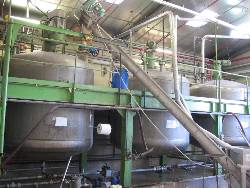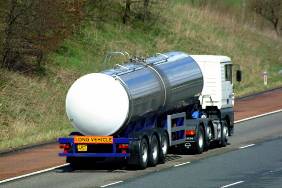Material loading models
Products loading are the most frequently operations met in the industry. Loadings are operated on a large panel of installation: mixing tank, grindings equipment, reactors, reclamation installations, road tank, etc.
Two example of installation (mixing vessel and road tank) are illustrated below:


When a solvent or volatile process mixture is charged into a process vessel then material amount losses (that will occur though the process vent in the form of solvent vapors) are depending on:
- Volume of liquid entering the tank,
- Equilibrium vapour pressure of each component that is contained in the inlet stream (and/or present in the vessel before the filling operation begins),
- Degree of saturation of the associated vapors.
Depending on installations and process steps, different loading modes for volatile liquids are possible:
- Standard charging (of pure solvent or mixture) in an empty vessel,
- Products charging to a partially filled vessel with miscible contents,
- Products charging to a partially filled vessel with immiscible contents.
Charging models proposed by Envmodels are usable for those three configurations.
References :
- EPA. 1995. Compilation of Air Pollutant Emission Factors. Volume I: Stationary Point and Area Sources, Fifth Edition, AP-42. Section 5.2, Transportation and Marketing of Petroleum Liquids. U.S. Environmental Protection Agency.
- NPCA. 1995. Emission Estimation Guidance Manual for the Paint and Coatings Industry (Second Edition). National Paint and Coatings Association, Inc., Washington.
- Hatfield, J. A. Subsurface Addition Emission Model, Accepted for Publication in Environmental Progress, November 24, 2003.
- EIIP. 2007. Methods for Estimating Air Emissions from Chemical Manufacturing Facilities Chapter 16 in EIIP Volume II.


